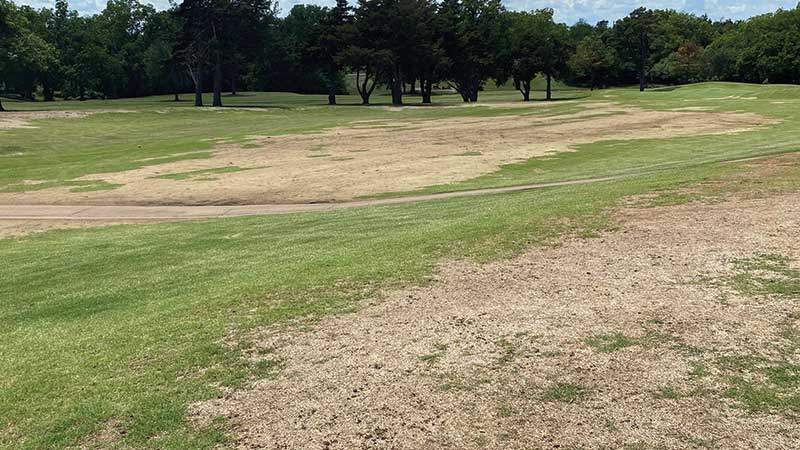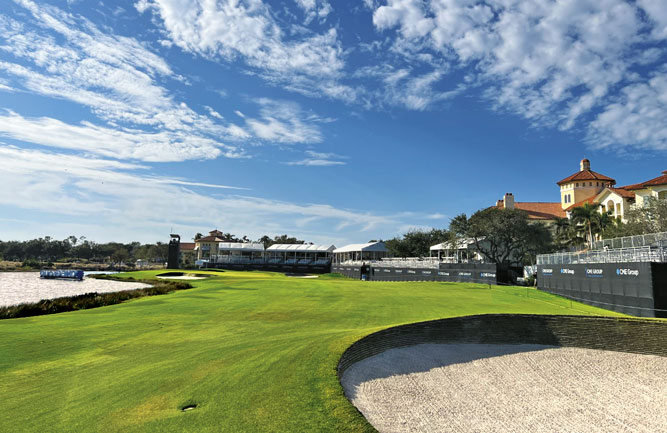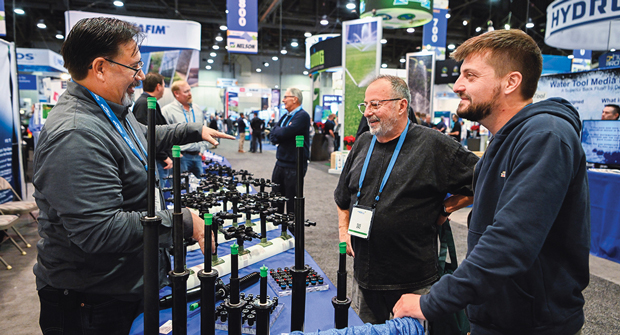A look at bermudagrass trials and spring greenup

Bermudagrass winter damage at Lakeside Memorial Golf Course in spring 2021. (Photo: Mike Buxton)
The National Turfgrass Evaluation Program (NTEP) started a new seeded and vegetative bermudagrass trial in 2019. One of the northernmost and coldest locations, Wichita, Kan., is the Kansas State University experiment station.
The research team maintains the seeded and vegetative bermudagrass cultivars as golf course rough or athletic fields. The researchers established the 6-by-6-foot plots on July 9 and 10, 2019, and the test included 13 seeded and 22 vegetative bermudagrass entries.
A lightweight cover protected seeded plots until germination was complete. During the remainder of the year, fertilization was applied with urea (46-0-0) on Aug. 7 at 1.0 pound N per 1000 ft2 and Aug. 21 at 0.5 pound N per 1000 ft2. Once established, weekly mowing was at 2.25 to 2.75 inches throughout the growing season. Irrigation was applied at 1.0 inches per event as necessary to prevent dormancy. In March 2020, the research team used a preemergent herbicide and 1.0 pound N per 1,000 ft2 from urea in May.
The research team collected percent cover data on July, August and September 2019 (rated visually, 0 to 100 percent), and on May 5, 2020, spring greenup was rated visually (1 = brown, 6 = acceptable color and 9 = optimum green color).
The initial cover rating found that seeded types DLF-460/3048 and JSC 2013-55 and vegetative types MSB-1017 and MSB-1042 had the highest percent cover. In August, seeded varieties DLF-460/3048, JSC 2013-55, PST-R6TM, Sun Queen (PST-R6MM) and vegetative types MSB-1017 and MSB-1042 had the highest percent cover. By the end of the 2019 growing season, seeded varieties Sun Queen, DLF-460/3048, PST-R6TM and vegetative types MSB-1017, MSB-1048 and OKC1666 had the highest percent cover.
Spring 2020 greenup revealed vegetative Latitude 36 and seeded OKS2015-7 and OKS2015-1 broke dormancy the earliest and had the highest greenup rating. Across colder test locations (Arkansas, Indiana, Kansas, Kentucky, Mississippi, New Mexico, Oklahoma and Virginia), the overall spring greenup mean included Tahoma 31, OKS2015-3, Latitude 36, Tiftuf, FB 1628, OKS2015-7, Astro, JSC 2013-85, JSC 2013-105, MSB-1026, JSC 2013-125 and OKC1666 in the top statistical group (>6.0 on a scale of 1 = brown and 9 = completely green).
References
Parsons, Linda; Griffin, Jason J.; and Shelton, Michael J. (2020) “2019 National Turfgrass Evaluation Program Bermudagrass Test: Establishment Data,” Kansas Agricultural Experiment Station Research Reports: Vol. 6: Iss. 7.










